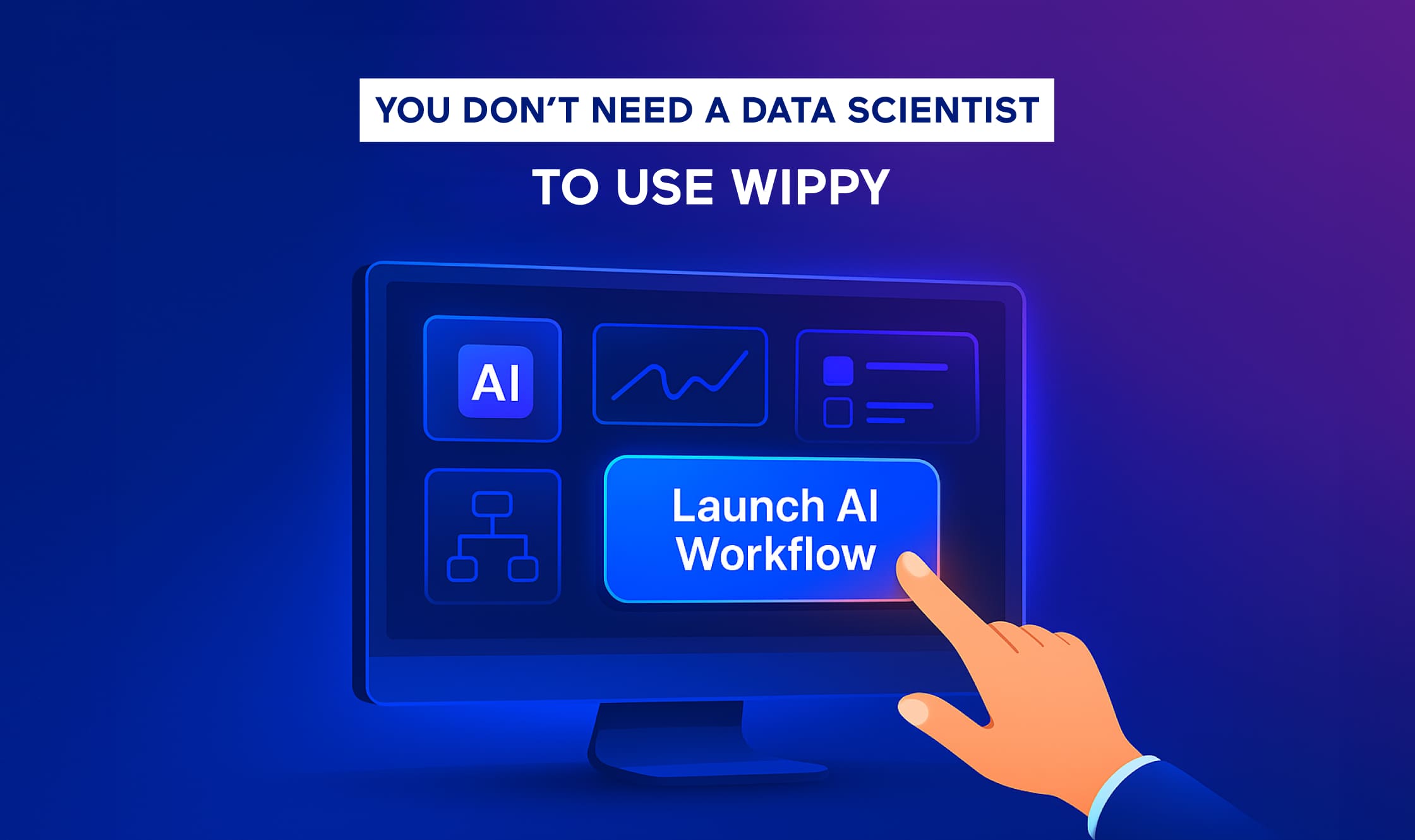AI platforms provide a smarter path to business automation compared to building from scratch. By leveraging purpose-built AI platforms and utilizing AI implementation services, businesses can achieve efficient and scalable solutions.
You don’t need to be Palantir or build their software internally to get Palantir-level results. Building your own internal AI platform may seem appealing, signaling technical ambition and promising “full control.” However, for most companies, this approach is a trap. In just the last two months, we’ve spoken with three different companies, all with excellent engineers, plenty of budget, and real automation needs—who fell into the same hole. Each one sunk 6+ months and over $1 million building internal AI platforms before even shipping something meaningful to users. That’s six months of dev cycles lost, engineering morale dented, and C-suite patience tested.
The irony? What they thought they were building was differentiation. What they were actually building was undifferentiated plumbing.
Section 1: Building AI Infrastructure from Scratch? Risky Move.
Let’s walk through what that typically looks like:
- A team of backend engineers starts architecting a system to handle agent communication, configuration, background jobs, and event handling.
- Meanwhile, another team is figuring out how to orchestrate prompts, LLM calls, tool usage, embeddings, and vector search.
- Then come the conversations around version control, rollback safety, agent lifecycle, and security policies.
Six months later, they have a dashboard that kind of works, a few agents that sometimes respond, and a shared understanding that they’ve basically just re-invented the infrastructure of an off-the-shelf platform—without any of the battle testing. Worse, the real problems—building the right workflows, extracting value from messy data, driving ROI—are still sitting in the backlog.
So why do so many teams try to build? Because the market tells them tools are simple but platforms are proprietary. That using something off-the-shelf means compromising. But that’s not true anymore.
Section 2: The Smarter Approach to Automation
If you’re trying to build an AI-enabled product or internal automation, you don’t need to build a platform from scratch—you need a framework that already has the hard parts solved. That’s exactly what Wippy is: a multi-agent AI operating system that comes with the infrastructure pre-built—so your team can spend their time designing useful agents, not debating how agent memory should be persisted.
With Wippy, you don’t need to figure out:
- How to pass memory between agents
- How to manage agent versioning and rollback
- How to expose custom tools to LLMs
- How to structure workflows that trigger based on events
- How to store and search over semantic embeddings
- How to deploy across environments with confidence
It’s already there. And it’s all extensible. Want to define a new tool or database connector? Add it to the registry. Need a new type of agent behavior? Compose it using traits. Want to deploy it as a single binary? You can.
This means your product and engineering teams can get straight to the part that matters: capturing knowledge, modeling business logic, and building agents that actually solve problems.
Example 1: Quoting Automation in Manufacturing
One of our manufacturing customers needed to accelerate how they responded to RFQs (requests for quote). Their process was slow and tribal—Excel files, engineering emails, and pricing logic scattered across departments. They could’ve spent six months building a pipeline to normalize that data and then wrap it in an AI interface. Instead, they used Wippy.
They deployed a workflow mapping for AI agents to streamline their quoting process, reducing response times and improving accuracy.
Example 2: AI Agents for Legal Due Diligence
A boutique law firm wanted to use LLMs to help junior associates with complex due diligence tasks—like reviewing lease agreements, summarizing indemnity clauses, and flagging redlines.
They didn’t want a generic chatbot. They needed something domain-specific, reliable, and composable. Something that could scale.
With Wippy, they defined:
- A set of agents, each focused on one clause type (indemnity, terminations, escalations, etc.).
- Tools that parsed specific file types and extracted relevant sections.
- A memory module for each client, so agents knew how to adapt based on the account’s risk preferences.
- A natural-language interface for the attorney to ask, “What’s unusual in this agreement compared to others we’ve seen?”
Everything was defined declaratively. No spinning up new services. No LLM orchestration framework. No custom backend logic.
They got a working internal tool that saved them hours per agreement and made junior associates dramatically more productive—without needing to hire an AI engineer.
Why Platforms Beat Piecemeal Tools (or DIY)
Piecemeal tooling leads to brittle systems. One team uses LangChain for chaining calls. Another uses Pinecone for embeddings. Someone else builds an API gateway in FastAPI. Eventually, nothing talks to each other cleanly. Debugging is a nightmare. Everything’s a one-off.
Meanwhile, the real differentiator—your logic, your knowledge, your workflows—gets lost in the glue code.
With a platform like Wippy, you get:
- Speed to value: Build your first agent in hours, not quarters.
- Modular design: Plug in your own tools and data sources.
- Versioned configuration: Roll back any change, audit every update.
- Conversational programming: Configure agents via natural language, not just YAML or Lua.
- Flexibility: From customer support bots to internal cost optimization workflows, it scales across use cases.
You’re not buying a black box. You’re getting a box of Legos, where the hardest pieces are already snapped together.
Final Thought: Build Logic, Not Infrastructure
The real value of AI platforms lies in their ability to free your teams from the burdens of infrastructure, allowing them to focus on what truly matters — delivering value to your customers.
Don’t build the platform. Use one.



